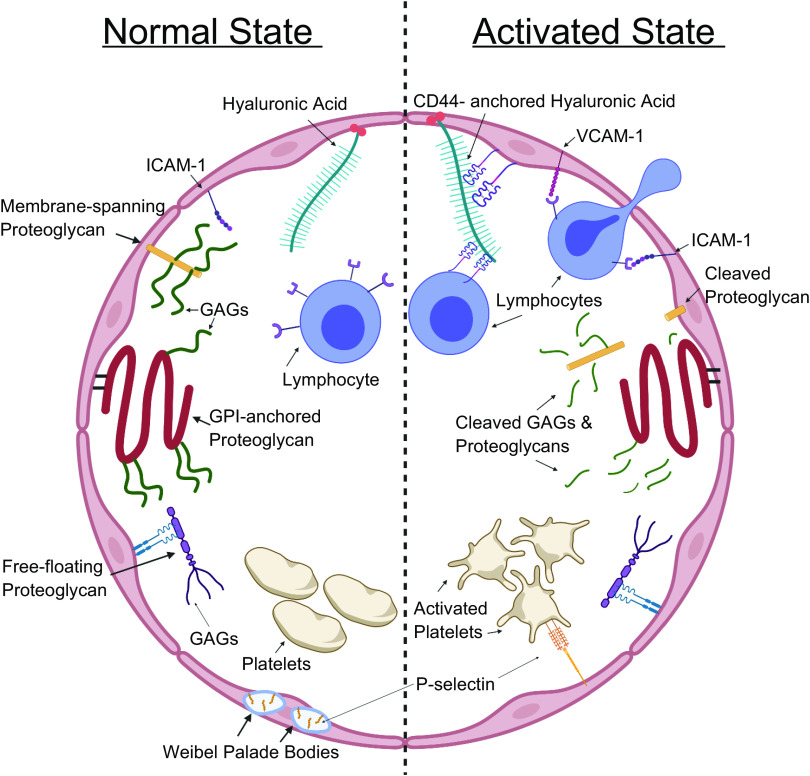Figure 1.
A cartoon of the glycocalyx of a cross-sectioned blood vessel divided into a “normal state” side and an “activated state” side. Normal state: under normal conditions, the glycocalyx protrudes into the lumen of blood vessels and obscures adhesion molecules like intercellular adhesion molecule 1 (ICAM-1). Other adhesion molecules like P-selectin are stored in Weibel–Palade bodies. Its proteoglycans and glycosaminoglycans actively inhibit lymphocytes’ and platelets’ interactions with the underlying endothelial cells. Activated state: activated endothelium and lymphocytes degrade the glycocalyx, exposing underlying adhesion molecules. Other adhesion molecules such as vascular cell adhesion molecule 1 (VCAM-1) are upregulated in activated endothelium and Weibel–Palade bodies are mobilized to the surface of endothelial cells with their contents. GAGs, glycosaminoglycans; GPI, glycosylphosphatidylinositol.

